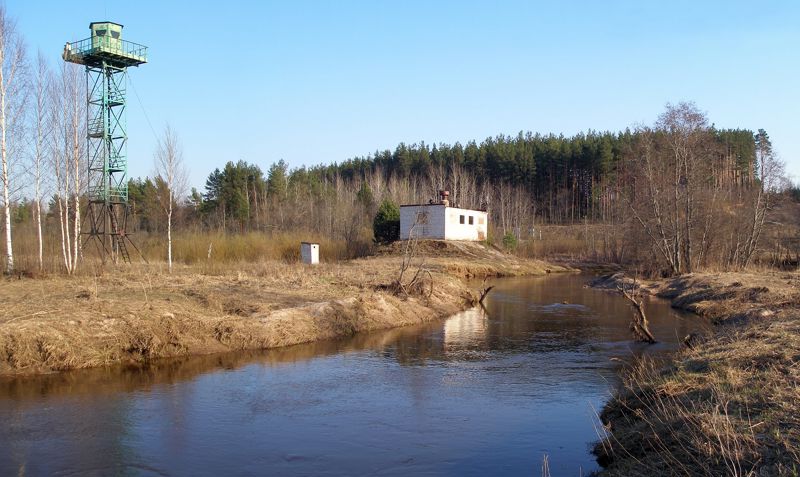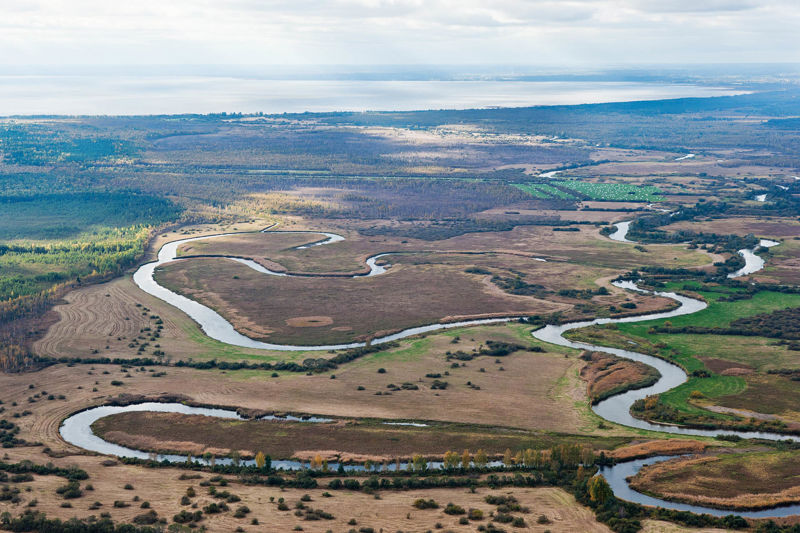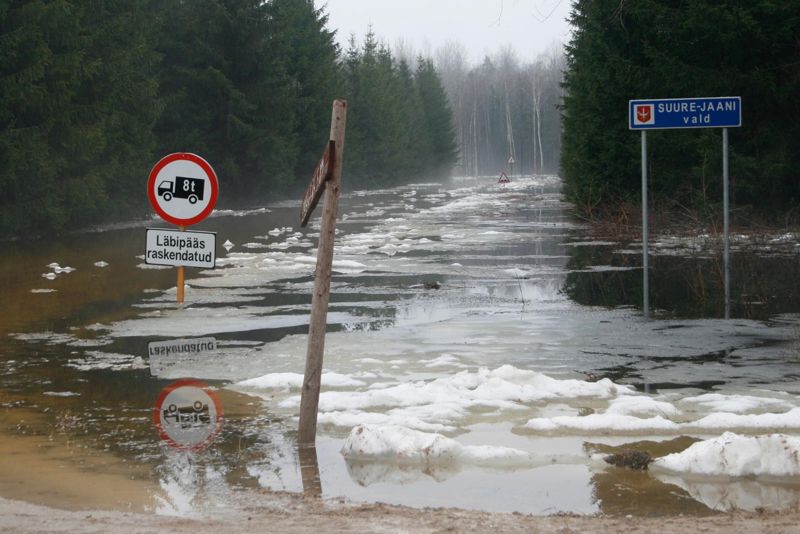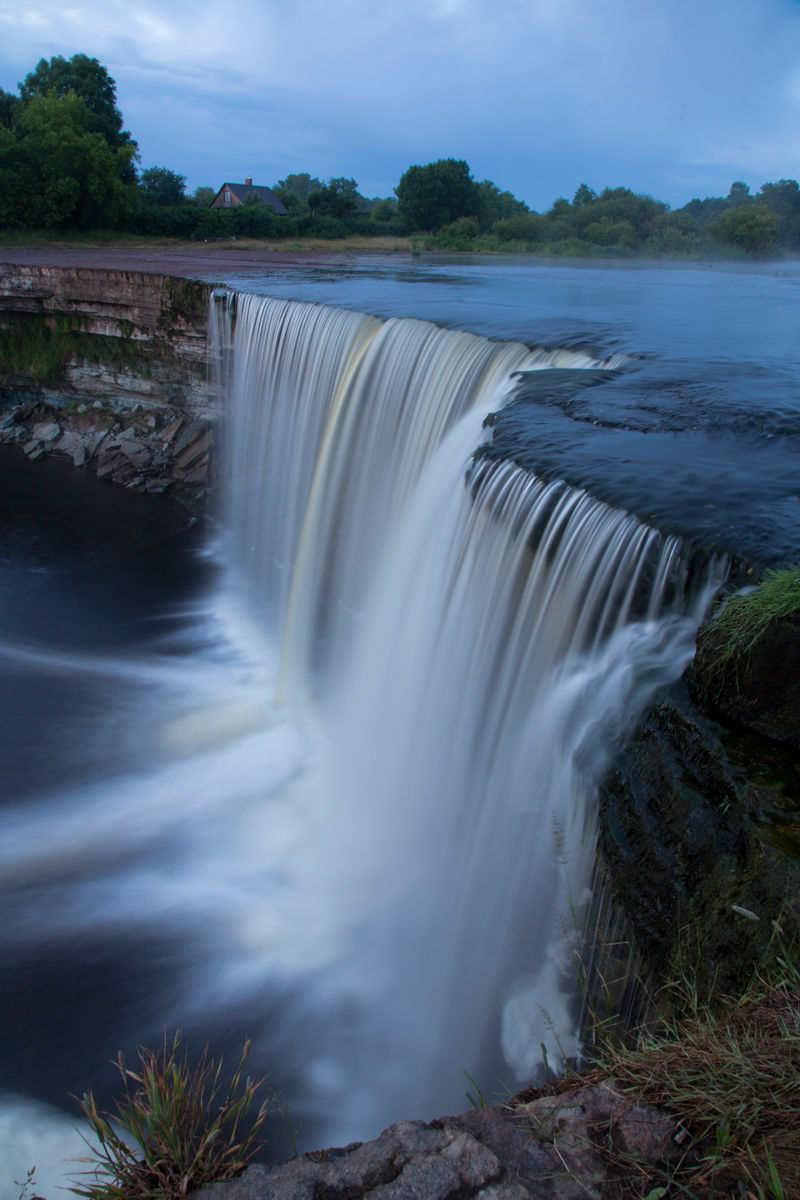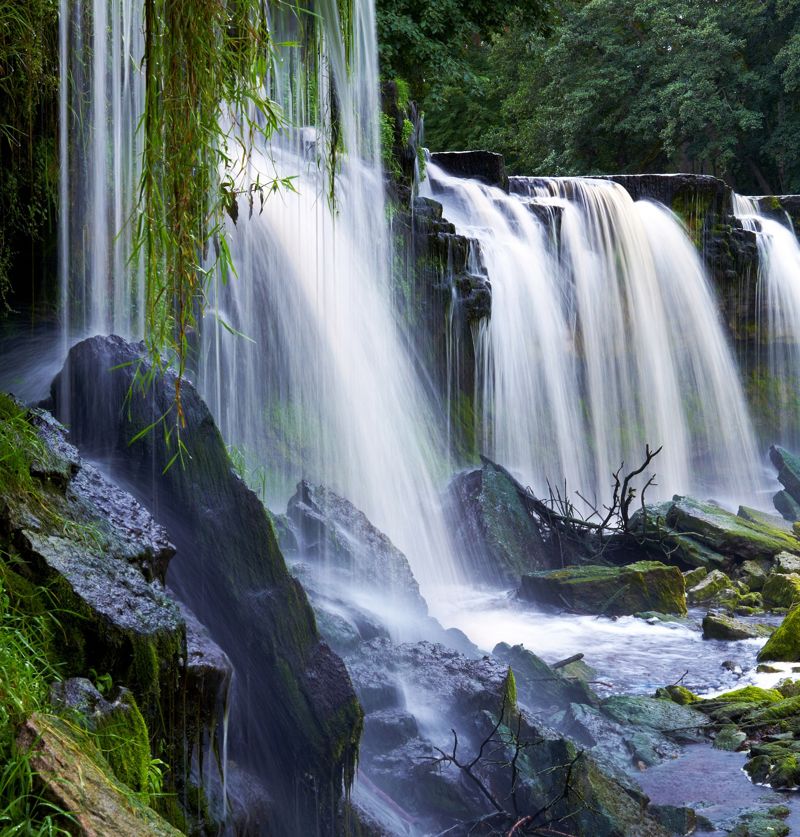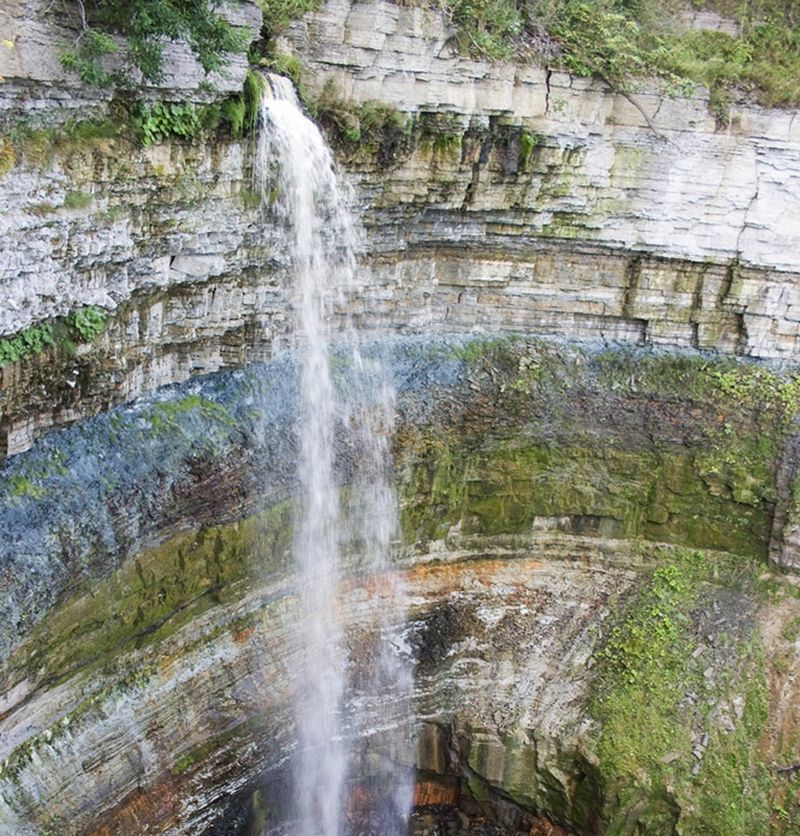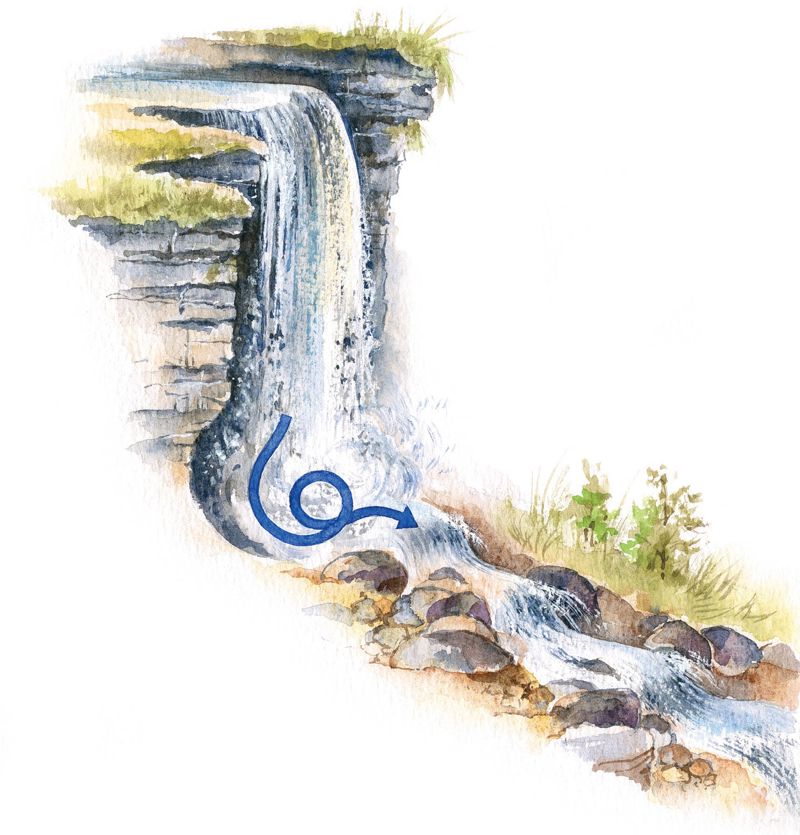- How does terrain affect the appearance of rivers?
- Why are some rivers fast, and some slow?
- How do waterfalls and rapids form?
Rivers of mountainous regions
The water of all rivers finally reaches the ocean. The course of rivers can be very different, depending on whether the river travels between the upland hills, meanders over a wide plain, flows through a large forest, or falls over a cliff's edge.
In mountainous regions, the river gradient is high, and rivers flow downstream fast. There are many rapids in such rivers, making them attractive for adventure and sports enthusiasts who enjoy rafting there. The upper course of such rivers is usually poor in water, as they get most of their water from the small mountain springs, although if there is snowmelt in spring, then the amount of water can increase drastically. The middle course of such rivers carries more water, as tributaries have joined the mainstem. Such rivers often flow in deep and forested valleys carved in stone. In the lower course, the flow slows down as the terrain becomes flatter, and the wide, water-rich rivers meander slowly towards the mouth.
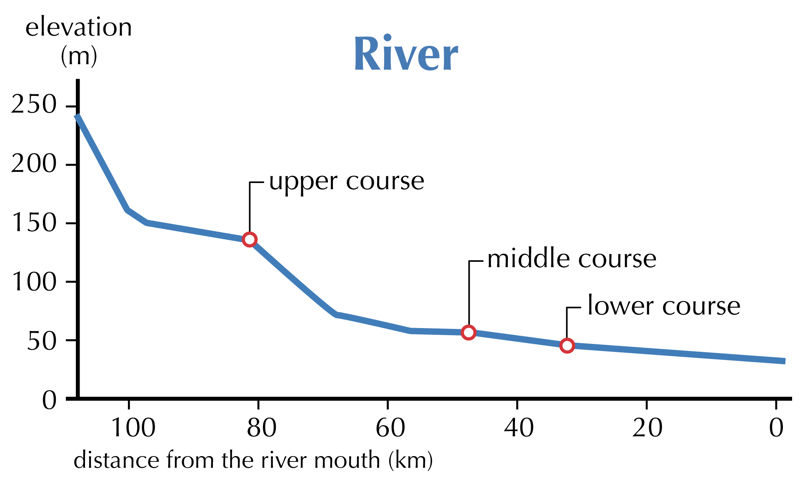
- Fast water flow in the upper course, slow water flow in the lower course
- Slow water flow in the upper course, fast water flow in the lower course
- The water level fluctuates depending on the season
- The water level is the same throughout the year
- The river gradient is high
- The river gradient is low
Rivers in plains
The rivers in plains usually begin from lakes or wetlands, and meander slowly across the flat land. They are slow and wide throughout their course. The slow-flowing water carries a lot of sediment to the lower course, where it settles and blocks the course of the water, forcing it to divide into several distributaries. That is why the rivers of plains often have a delta at the river's mouth.
There are often floods during the rainy season, or in spring, when there is a lot of precipitation and snowmelt. The slow-flowing river cannot carry the excess water away. Wetlands often form on the banks of such rivers, because rainwater cannot flow along the flat and low ground into the river, but rather seeps into the ground and makes it wet.
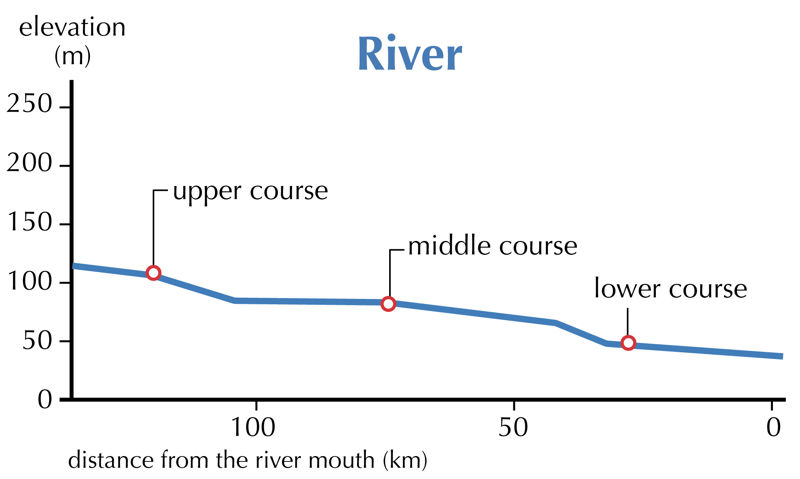
- Slow-flowing and wide
- Fast-flowing and wide
- The water level fluctuates throughout the year
- The water level is the same throughout the year
- The river gradient is high
- The river gradient is low
Think!
- Compare the flow rate of the rivers in mountainous and plain regions.
Rivers that flow over a cliff
Some rivers flow over a cliff before they reach the river's mouth. When the river flows sharply over a cliff, a waterfall is formed. This is especially common in the coastal areas with a cliffed coast. Such rivers usually have a slow-flowing, wide upper and middle course, as well as a steep and fast-flowing lower course. Rapids form below the waterfall, where the riverbed is shallow and rocky.
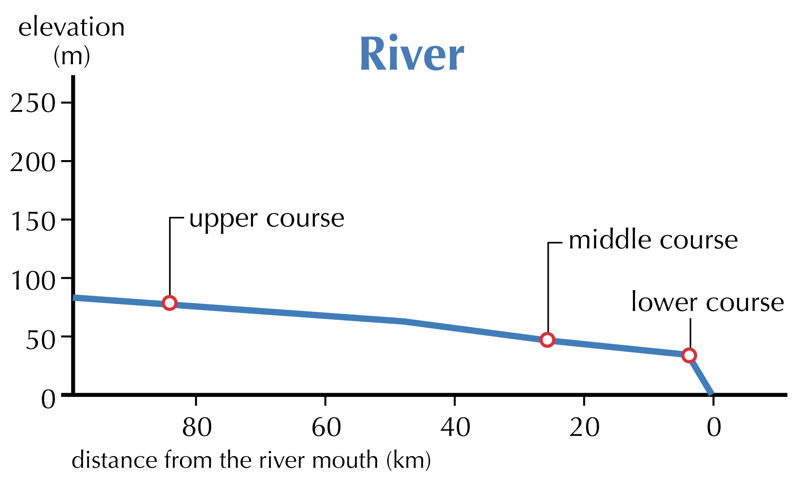
Waterfalls are majestic and spectacular during the rainy season thanks to the spring's snowmelt, but may dry up to a narrow stream during a hot and dry summer.
- Fast water flow in the upper course, slow water flow in the lower course
- Slow water flow in the upper course, fast water flow in the lower course
- The water level fluctuates depending on the season
- The water level is the same throughout the year
Think!
- Why is the flow rate of the rivers that flow over a coast's cliff so high before reaching the sea? Why are there no deltas on these rivers?
Important terms
- waterfall – an area where water flows over a steep vertical drop
- rapid – a fast-flowing part of the river in an uneven and rocky riverbed
I now know that…
In mountainous regions, the river gradient is high, and rivers flow downstream fast. Such rivers usually have a steep and fast-flowing upper course and a flat and slow-flowing lower course. The rivers of plains are slow and wide throughout their course, and often flood the riverbanks. When a river flows sharply over a cliff, a waterfall is formed.
